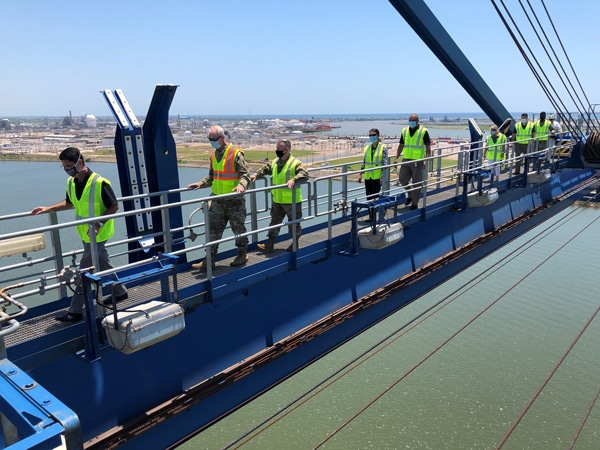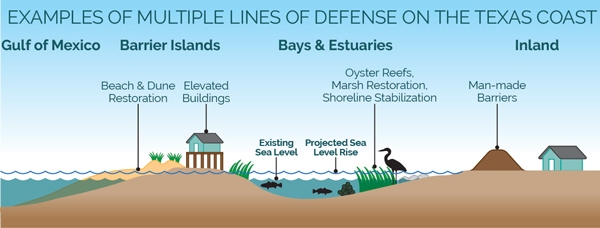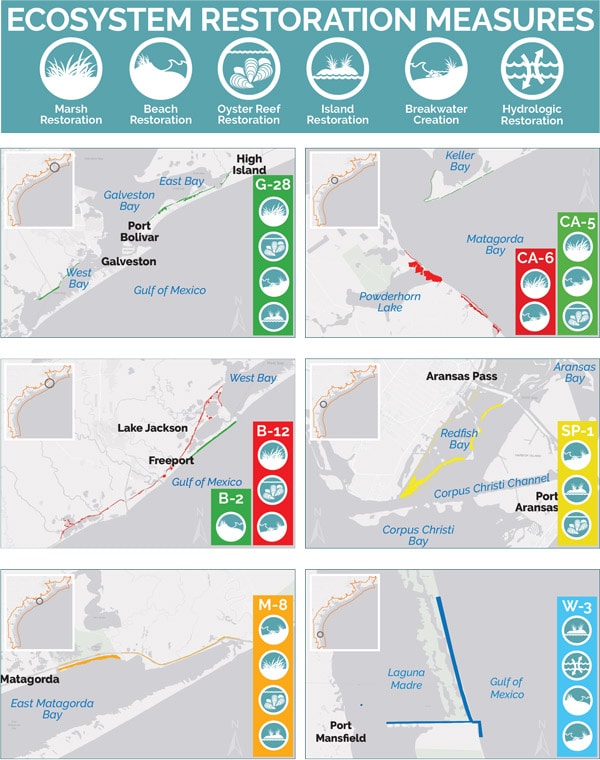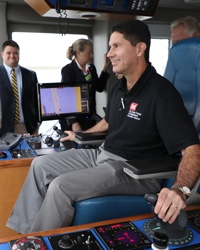Dr. Edmond Russo, a 27-year veteran of the US Army Corps of Engineers, has a passion for innovation, especially identifying and pursuing new ways to improve efficiency and effectiveness of water resource management activities. In his work at the Galveston District, he led a team that is developing a 50-year plan to protect and restore the Texas Gulf Coast.

Galveston District’s 50,000 square-mile area of responsibility spans over 360 miles of the Texas coast, from Louisiana to Mexico, extending inland 150-200 miles, and includes world-scale ports, container terminals, and the Houston Ship Channel. The region’s fragile coastal shorelines, ecosystems and infrastructure are vulnerable to sea level rise and no stranger to extreme storms. The District has correspondingly big challenges and opportunities – in the areas of navigation, flood risk management, coastal storm risk management, and ecosystem restoration. The Galveston team is currently working on navigation channel improvement projects totaling approximately $3.9 billion.
When Edmond arrived at the Galveston District in 2014, he faced significant organizational and collaboration challenges. Under his leadership and driven by his “Fierce Urgency of Now” (FUN) approach, the District became the first Engineering With Nature Proving Ground, which inspired and enabled the Galveston team to collaborate and innovate to effectively address pressing water resource management challenges. The team’s work led to the integration of nature-based solutions into their traditional water management processes. For example, in one project, sediment dredged from the Houston Ship Channel, which was required to expand the channel and improve shipping safety, was used to construct wetlands and dikes in Galveston Bay. By using the dredged sediment instead of more expensive rock for the lining of the dikes, the team was able to achieve extended ecological benefits, while meeting its navigation safety and reliability mandates, and reducing costs by about 30% compared to more traditional approaches.
What was learned from initial EWN projects is being incorporated into larger projects in the District, including the Coastal Texas Protection and Restoration Feasibility Study, which recommends infrastructure construction along the coast of Texas on the scale of $22B to $32B and spanning a 50-year timeframe. Part of the proposed plan is to construct a 40-mile long barrier of beaches and vegetated dunes across Galveston Island and Bolivar Peninsula. A key objective is to reduce coastal storm surge from the Gulf of Mexico into Galveston Bay. This will reduce the risk of property and infrastructure damage and protect and restore fragile ecosystems. Edmond believes this will be critical to achieving long-term resilience and sustainability of coastal communities and ecosystems, especially along the Houston Ship Channel where billions of dollars of energy sector and other economic assets are located.

– Economic damage from coastal storm surge
– Inland shoreline erosion
– Gulf shoreline erosion
– Loss of threatened and endangered critical habitats
– Disrupted hydrology
(Graphic courtesy of the Coastal Texas Study website at https://coastalstudy.texas.gov/overview/why/index.html)
Edmond talks about the importance of one of the core EWN principles the team has applied to the development of the Feasibility Study – enhancing communications and collaboration with decision makers, agency partners, academics, and public stakeholders, through a variety of activities, including community work groups. A key finding has been that early and frequent engagement with clear and transparent explanations of the process, progress, and intent of each stage, plus enabling stakeholders to influence the process and outcomes, is helping to achieve shared understanding and unity of purpose. He notes this spirit of collaboration will be critical in the future planning and implementation phases of the long-term Coastal Texas Protection and Restoration Plan.
When envisioning the Texas coast over the next 50 years, Edmond believes the application of EWN in the Galveston District will enhance understanding of the complex performance of integrated coastal storm risk management and ecosystem restoration features at a landscape scale. The integration of robust field observation, data collection and analysis, leap-ahead biophysical process modeling and simulation, machine learning and artificial intelligence will significantly improve decision making, project performance, and outcomes – especially during significant storm events. He notes that as the Galveston District continues to innovate, the lessons learned in applying EWN principles and practices and those associated outcomes will be shared with other Corps Districts to extend value to the nation.

– Restoring fish and wildlife habitat
– Improving hydrologic connectivity
– Reducing erosion to shorelines
– Creating/Restoring oyster reefs
– Implementing sediment management
(Graphic courtesy of the Coastal Texas Study website at https://coastalstudy.texas.gov/overview/why/index.html)





